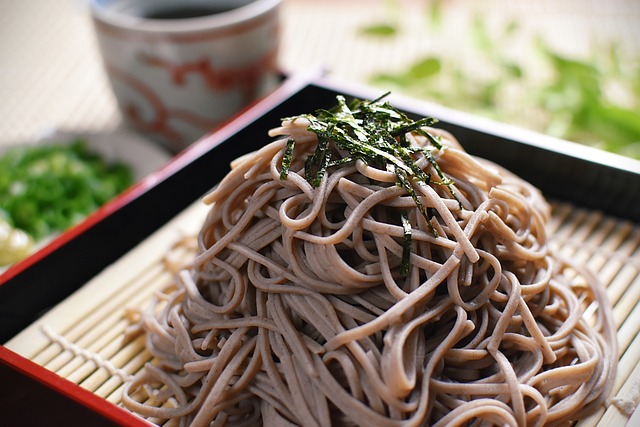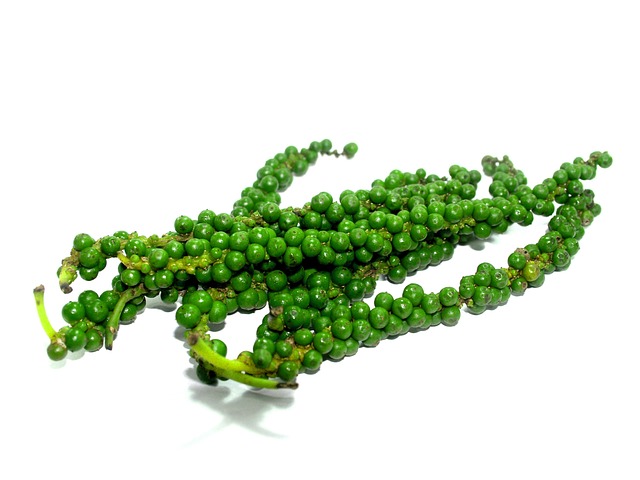There is no single food that can detox your body. Rather, a variety of foods add to your general wellness. Here’s all you need to know about detox eating.
Trendy diets or eating programs are frequently promoted for the benefits of “detoxing” and “cleansing” the body. Many of these assertions, however, are not supported by scientific evidence and may possibly be dangerous.
In reality, a 2015 study determined that there was no compelling information to support the use of detox diets for weight loss or toxin elimination. Meanwhile, according to a 2017 analysis, juicing and detox diets can promote initial weight loss due to reduced calorie intake, but they are likely to lead to weight gain after a person returns to a normal diet.
The concept of a cleanse or detox is not harmful; the outcomes they purport to provide are frequently deceptive. Furthermore, following detox diets or crash dieting to lose weight can result in weight gain or provoke disordered eating.
Antioxidant-Rich Foods Can Help Detox
Antioxidants are compounds that may protect your body’s cells against free radical damage caused by chemicals, smoking, pollution, radiation, and as a result of regular metabolism. Selenium, vitamin A and associated carotenoids, vitamins C and E, and other phytochemicals such as lycopene, lutein, and quercetin are examples of dietary antioxidants.
The anti-inflammatory characteristics of natural antioxidants make them a great alternative. Numerous studies have shown their success in this field, and they are increasingly being recommended in favor of pharmaceutical products because of the lack of severe side effects.
Foods Containing Prebiotics
Prebiotics are inert food components that are frequently added to “functional foods.” These substances are thought to encourage the growth of beneficial gut bacteria, improving gastrointestinal health and maybe giving other health advantages.
Prebiotics may bring health benefits to the general public, according to ongoing studies. These advantages include increased calcium absorption, reduced allergy risk, enhanced immune system protection, and other metabolic benefits.
Fiber-Rich Foods
Fiber is well-known for its digestive benefits, but it is not the only one. Dietary fiber has various additional health benefits, including improved cholesterol and blood sugar control and a lower risk of diabetes or heart disease. Fiber also benefits weight loss, obesity prevention, and even cancer prevention.
Foods for the Heart
Good foods for your heart can assist your body in detox by lowering “bad” LDL cholesterol levels. A high level of LDL can lead to the formation of plaque in your arteries.
As a result, a variety of dangerous disorders, including coronary artery disease and peripheral artery disease, might develop. These conditions are the primary causes of heart attacks and strokes.
Meals That Keep You Hydrated
Hydration is crucial to your body’s health. Consuming plenty of water is essential for many health goals, including detoxification. It’s also critical to keep an eye on your salt intake.
Excess sodium (more than the recommended maximum of 2,300 milligrams per day) can be harmful to your health. Furthermore, foods high in sodium are also detrimental in other ways.
Vegetables
Vegetables are high in phytochemicals (naturally occurring plant chemicals), which are being studied for their ability to control hormones, boost the immune system, and prevent cell damage. It’s beneficial and nutritious to incorporate vegetables into most meals to meet the required amount of daily consumption, which is 2-4 cups.
Onions, garlic, beets, artichokes, and cruciferous vegetables such as broccoli, cauliflower, cabbage, collard greens, kale, and Brussels sprouts are regarded to be very beneficial for liver cleansing.
Other healthy vegetables to add to your diet to maintain a healthy and detoxifying diet are spinach, sprouts, asparagus, carrots, celery, cucumbers, endives, jicama, kohlrabi, sweet potatoes, leeks, lettuce, okra, parsnips, radishes, rutabaga, snow peas, squash, yams, turnips, watercress, zucchini, yucca, and sea vegetables including arame, dulse, hijiki, kelp, wakame, and nori sheets.
Fruit
Fruits, like vegetables, contain phytonutrients that may provide health advantages. The USDA recommends that healthy adults consume at least 1 1/2 – 2 1/2 cups of fruit every day.
Choose fresh or frozen whole fruit like apricots, blackberries, blueberries, cantaloupe, cherries, cranberries, grapefruit, grapes, guava, kiwi, lime, loganberries, mango, melon, lemon, nectarines, oranges, papaya, peaches, pears, figs, pineapple, plums, pomegranate, prunes, raspberries, strawberries, apples, tangerines, and watermelon.
Complex Carbohydrates and Whole Grains
Carbohydrates are sometimes viewed as the enemy, yet there are numerous carbs besides bread and pasta. Try different sources of whole grains and complex carbohydrates, such as:
- Amaranth
- Arrowroot
- Barley
- Buckwheat
- Farro
- Freekeh
- Millet
- Oats
- Quinoa
- Rice
- The sweet potato
- Tapioca
- Teff
- Wild Rice
- Winter Squash
Brown rice pasta, buckwheat soba noodles, glass noodles, kelp noodles, mung bean noodles, shirataki noodles, rice crackers, quinoa flakes, gluten-free bread, and rice bran are all examples of items manufactured from the above ingredients.

Legumes and beans
Fiber, protein, and iron are abundant in beans and legumes.
Try:
- Yellow and green split peas
- Lentils (red, brown, green, yellow, French, du Puy) (red, brown, green, yellow, French, du Puy)
- Additional beans and legumes include adzuki, cannellini, chickpeas, black beans, black-eyed peas, kidney beans, and lima beans.
Fats
Many individuals avoid consuming fat during a cleanse; however, eating excellent fats from foods like raw nuts, avocado, and seeds, and nut and seed butter is beneficial.
Consider:
- Almonds
- Brazilian nuts
- Cashews
- Chia
- Coconut
- fava beans
- Hazelnuts
- Hemp seeds, nuts, and hearts
- The macadamia nut
- Tahini, almond butter, and cashew nut butter are examples of nut and seed butter.
- Pecans
- The pine nuts
- Pistachios
- Puffed Poppy Seeds
- Pumpkin
- toasted sesame seeds
- Seeds of sunflower
- Walnuts
If you’re going to cook with oil, aim to use high-quality, cold-pressed, unrefined oils like
- almond oil
- avocado oil
- coconut oil
- Flaxseed oil
- hazelnuts oil
- Hemp seed oil
- Extra virgin olive oil
- Pumpkin seed oil
- Saffron oil
- In small proportions, safflower, sesame, and sunflower oils
- walnuts oil
Dairy Products and Dairy Substitutes
Although most cleanses recommend avoiding dairy for a while, some incorporate probiotic-rich organic yogurt and kefir. Consider using one of these plant-based milk instead of cow’s milk:
- Milk made from avocados
- Coconut cream
- Milk made from hemp seeds
- Almond or cashew milk is a type of nut milk (unsweetened)
- Milk made from rice (unsweetened)
Beverages
In general, it’s a good idea to drink according to your thirst, while some people have conditions that demand them to drink more or less. You may elect to reduce your intake of alcohol, caffeine, and soda while resetting your body through nutrition, instead opting for herbal, green, or white tea. Here are some additional beverage options:
- The coconut water
- Beverages or smoothies made with nutritious ingredients
- Herbal teas like rooibos tea, cinnamon tea, and ginger tea
- Water with infused flavors (sometimes called “detox water”)
- Kombucha (unsweetened) (unsweetened)
- Water with lemon
- Water with minerals or seltzer
- Rice milk, almond milk, and hemp milk are examples of plant-based “milk.”
- Green tea and white tea are examples of true tea
- Unsweetened juice derived from permitted fruits and vegetables
If you can’t start your day without a cup of coffee, try restricting yourself to no more than one 8-ounce cup (and avoid dairy milk or creamer and added sweetener).
Condiments
Fresh and dried herbs and spices can enhance the flavor of any dish without adding sugar or salt. Fresh herbs like basil, chives, cilantro, dill, mint, oregano, parsley, rosemary, sage, tarragon, or thyme can be chopped.

Allspice, anise, caraway seeds, cardamom, celery seeds, cinnamon, cloves, coriander, cumin, nutmeg, saffron, tamarind, or turmeric are some cooking spices. Fresh or raw ginger and garlic may rapidly add flavor to foods.
Here are some more sauces and ingredients to think about:
- Baking powder or baking soda
- Cacao nibs and cacao powder
- Carob flour
- Amino acids derived from coconut
- Fish Sauce
- Lime and lemon
- Mustard Miso
- Shoyu nama shoyu
- Yeast nutrition
- Olives
- a pinch of sea salt
- Vinegar (e.g., apple cider vinegar, balsamic, coconut, red or white wine rice vinegar) (e.g., apple cider vinegar, balsamic, coconut, red or white wine, rice vinegar)
- Tamari made without wheat
- Sweeteners Other Than Sugar
It is important to limit your overall intake of sweets and sugar from all sources.
If you must use a sweetener, go for natural sources such as the following:
- Molasses from Africa
- Syrup made from brown rice
- Nectar de coco
- Use dried fruit sparingly.
- Fruit preserves
- Honey
- The maple syrup
- The monk fruit
- Stevia
Use whole, fresh fruit for dessert, or try frozen desserts or puddings made with nut milk (or yogurt) and fruit.
Protein from Animals
Protein is a vital macronutrient that your body needs for a variety of tasks. Here are some protein possibilities for you to think about.
- Sardines and anchovies
- Organic Turkey
- Organic, preferably pastured chicken
- Alaskan salmon, for example, is a wild, cold-water fish.
- Bison, pheasant, quail, venison, buffalo, and ostrich are examples of wild game.
- Eggs
To Conclude
When it comes to nutritionally resetting your body, you should deny yourself, skip meals, or go through an overly stringent juice cleanse. The ultimate goal is to include these nutritious and delicious foods into your daily routine and to develop beneficial lifestyle changes that will persist long after any form of detoxification is completed.
Take advantage of this time to try out different dishes and cooking methods. You might learn, for example, that spaghetti squash isn’t much more difficult to make than pasta. Similarly, roasted cauliflower may be a filling snack when seasoned with spices, and nut milk is a good substitute for cow’s milk. Above all, seek out healthful foods that you will love eating.

